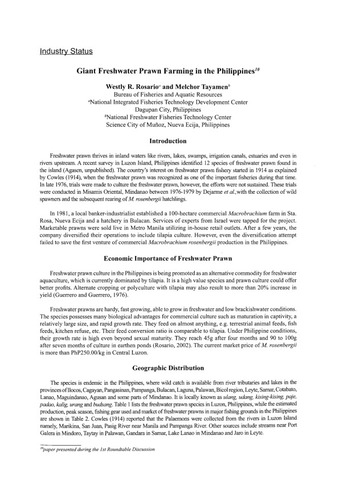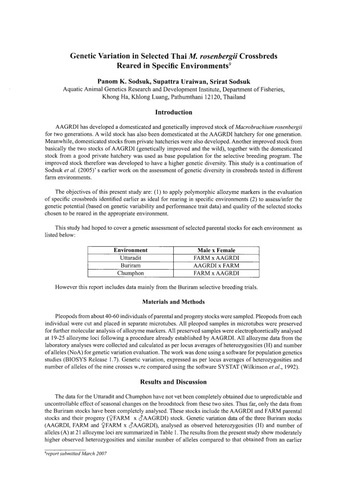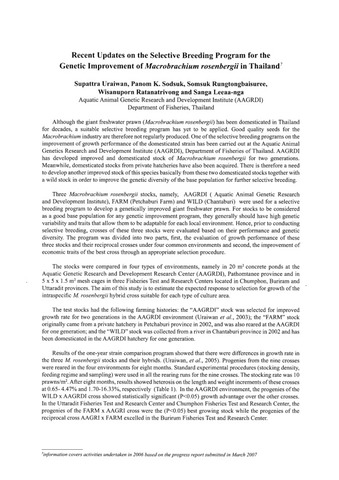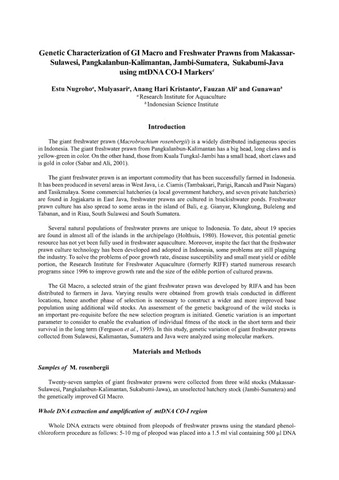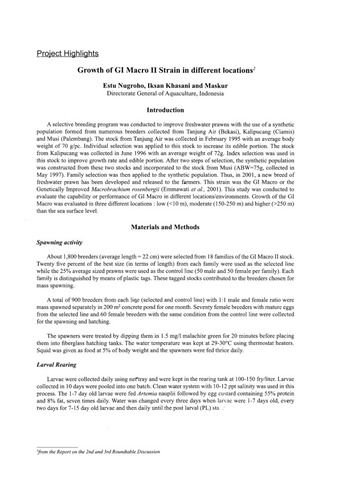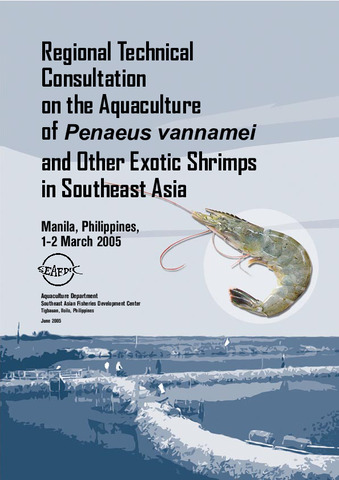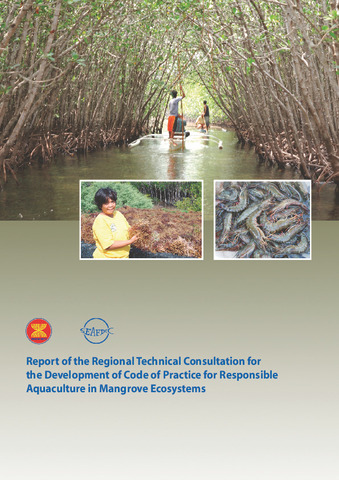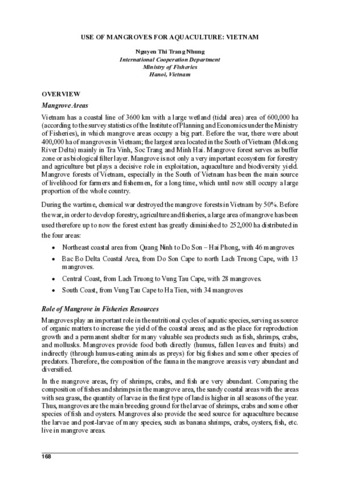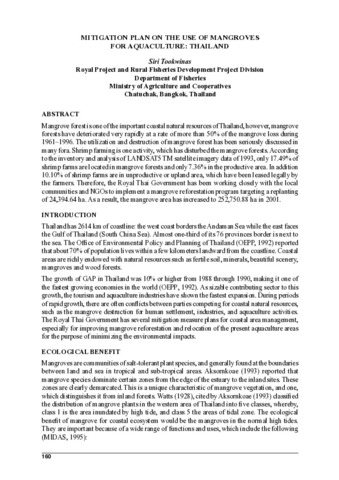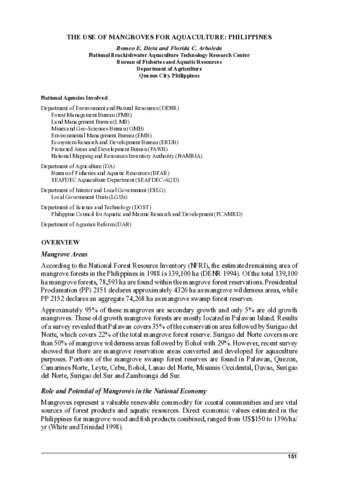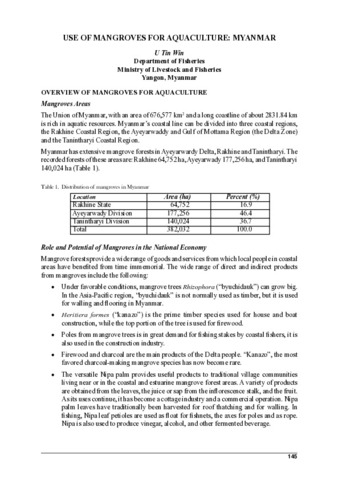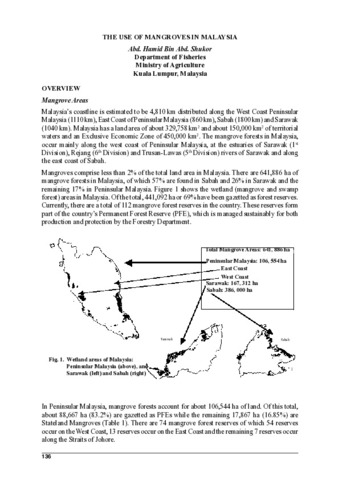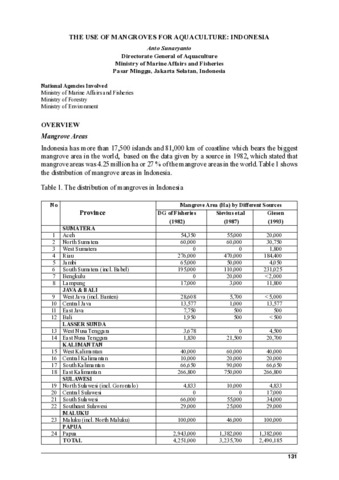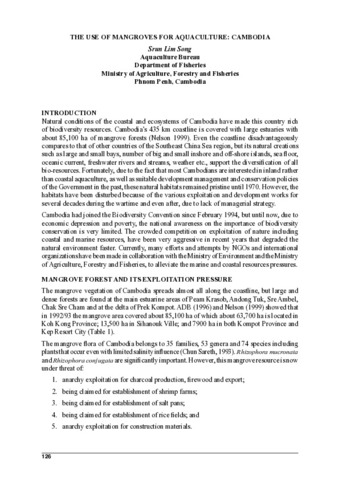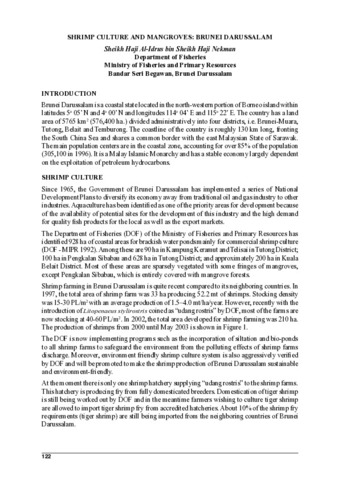Meeting Reports: Recent submissions
21-40 / 111
-
Giant freshwater prawn farming in the Philippines
(Aquaculture Department, Southeast Asian Fisheries Development Center, 2007)Freshwater prawn thrives in inland waters like rivers, lakes, swamps, irrigation canals, estuaries and even in rivers upstream. A recent survey in Luzon Island, Philippines identified 12 species of freshwater prawn found ... -
Genetic variation in selected Thai M. rosenbergii crossbreds reared in specific environments
(Aquaculture Department, Southeast Asian Fisheries Development Center, 2007)AAGRDI has developed a domesticated and genetically improved stock of Macrobrachium rosenbergii for two generations. A wild stock has also been domesticated at the AAGRDI hatchery for one generation. Meanwhile, domesticated ... -
Allozyme-based genetic variation in crossbreds produced from three Thai Macrobrachium rosenbergii stocks
(Aquaculture Department, Southeast Asian Fisheries Development Center, 2007)Molecular technology at enzyme/protein level known as “allozyme marker” is a widely accepted powerful technique to study genetic variation (Ward and Grewe, 1995) as well as intraspecific population studies (Sodsuk, 1996; ... -
Recent updates on the selective breeding program for the genetic improvement of Macrobrachium rosenbergii in Thailand
(Aquaculture Department, Southeast Asian Fisheries Development Center, 2007)Although the giant freshwater prawn (Macrobrachium rosenbergii) has been domesticated in Thailand for decades, a suitable selective breeding program has yet to be applied. Good quality seeds for the Macrobrachium industry ... -
Preliminary growth comparison of three Macrobrachium rosenbergii stocks and their reciprocal crosses in four environments
(Aquaculture Department, Southeast Asian Fisheries Development Center, 2007)Three stocks of Macrobrachium rosenbergii namely, “AAGRDI” (Aquatic Animal Genetic Research and Development Institute), “FARM” (Petchaburi Farm) and “WILD” stocks were used for the selective breeding program. Generally, a ... -
Macrobrachium culture industry in Thailand
(Aquaculture Department, Southeast Asian Fisheries Development Center, 2007)There are numerous freshwater prawns classified under the genus Macrobrachium which is generally categorized under the Family Palaemonidae Rafinesque, 1815, sub-family Palaemoninae Rafinesque, 1815. In Thailand, 19 ... -
Genetic characterization of GI Macro and freshwater prawns from Makassar-Sulawesi, Pangkalanbun-Kalimantan, Jambi-Sumatera, Sukabumi-Java using mtDNA CO-I markers
(Aquaculture Department, Southeast Asian Fisheries Development Center, 2007)The giant freshwater prawn (Macrobrachium rosenbergii) is a widely distributed indigenous species in Indonesia. The giant freshwater prawn from Pangkalanbun-Kalimantan has a big head, long claws and is yellow-green in ... -
Collection and evaluation of wild and farmed stocks of giant freshwater prawn in Indonesia
(Aquaculture Department, Southeast Asian Fisheries Development Center, 2007)Giant freshwater prawn is an important commodity that has been cultured successfully in Indonesia. Freshwater prawn farming has been adopted in several areas of West Java, i.e. Ciamis (Tambaksari, Parigi, Rancah and Pasir ... -
Growth of GI Macro II strain in different locations
(Aquaculture Department, Southeast Asian Fisheries Development Center, 2007)A selective breeding program was conducted to improve freshwater prawns with the use of a synthetic population formed from numerous breeders collected from Tanjung Air (Bekasi), Kalipucang (Ciamis) and Musi (Palembang). ... -
Giant freshwater prawn culture in Indonesia
(Aquaculture Department, Southeast Asian Fisheries Development Center, 2007)Indonesia is one of the countries in Asia with rich biodiversity, particularly in terms of the number of endemic freshwater aquatic organisms. Numerous indigenous freshwater fish species are found in Sumatera (30 spp.), ... -
Regional technical consultation on the aquaculture of Penaeus vannamei and other exotic shrimps in Southeast Asia.
(Aquaculture Department, Southeast Asian Fisheries Development Center, 2005) -
Report of the Regional Technical Consultation for the Development of Code of Practice for Responsible Aquaculture in Mangrove Ecosystems.
(Aquaculture Department, Southeast Asian Fisheries Development Center, 2005) -
Use of mangroves for aquaculture: Vietnam.
(Aquaculture Department, Southeast Asian Fisheries Development Center, 2004)Vietnam has a coastal line of 3600 km with a large wetland (tidal area) area of 600,000 ha (according to the survey statistics of the Institute of Planning and Economics under the Ministry of Fisheries), in which mangrove ... -
Mitigation plan on the use of mangroves for aquaculture: Thailand.
(Aquaculture Department, Southeast Asian Fisheries Development Center, 2004)Mangrove forest is one of the important coastal natural resources of Thailand, however, mangrove forests have deteriorated very rapidly at a rate of more than 50% of the mangrove loss during 1961–1996. The utilization and ... -
The use of mangroves for aquaculture: Philippines
(Aquaculture Department, Southeast Asian Fisheries Development Center, 2004)According to the National Forest Resource Inventory (NFRI), the estimated remaining area of mangrove forests in the Philippines in 1988 is 139,100 ha (DENR 1994). Of the total 139,100 ha mangrove forests, 78,593 ha are ... -
Use of mangroves for aquaculture: Myanmar.
(Aquaculture Department, Southeast Asian Fisheries Development Center, 2004)Aquaculture has only started to develop rapidly in the past few decades, due to better knowledge of culture species, improved methodologies and techniques in breeding, nutrition and increasing demand for food fish of ... -
The use of mangroves in Malaysia
(Aquaculture Department, Southeast Asian Fisheries Development Center, 2004) -
The use of mangroves for aquaculture: Indonesia.
(Aquaculture Department, Southeast Asian Fisheries Development Center, 2004)Indonesia has more than 17,500 islands and 81,000 km of coastline which bears the biggest mangrove area in the world, based on the data given by a source in 1982, which stated that mangrove areas was 4.25 million ha or 27 ... -
The use of mangroves for aquaculture: Cambodia.
(Aquaculture Department, Southeast Asian Fisheries Development Center, 2004)Natural conditions of the coastal and ecosystems of Cambodia have made this country rich of biodiversity resources. Cambodia’s 435 km coastline is covered with large estuaries with about 85,100 ha of mangrove forests (Nelson ... -
Shrimp culture and mangroves: Brunei Darussalam.
(Aquaculture Department, Southeast Asian Fisheries Development Center, 2004)Brunei Darussalam is a coastal state located in the north-western portion of Borneo island within latitudes 5o 05’ N and 4o 00’ N and longitudes 114o 04’ E and 115o 22’ E. The country has a land area of 5765 km2 (576,400 ...

